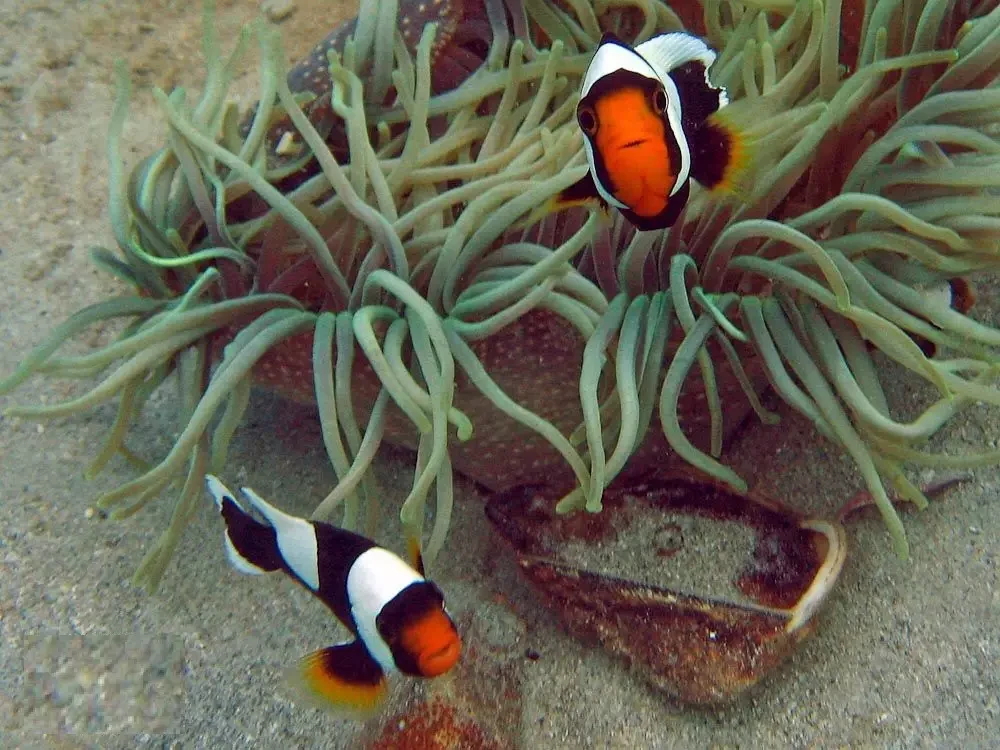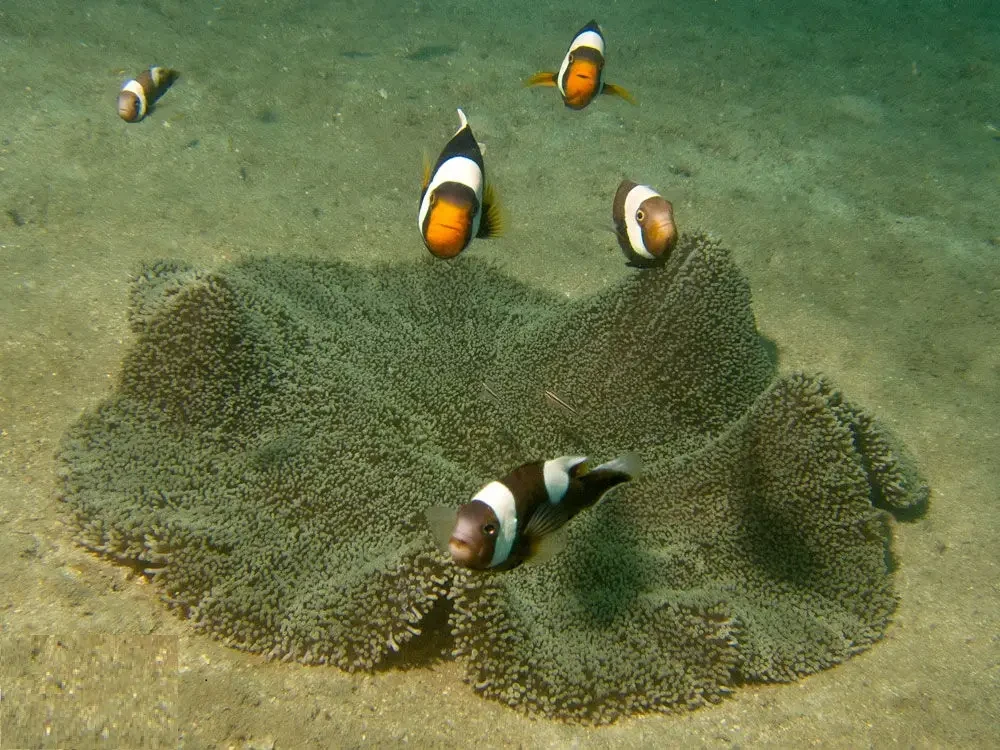Among the variety of clownfish, there is one special species that attracts attention with its unique pattern. Saddle amphiprion (Amphiprion polymnus), or saddleback clown, stands out black and white coloration and a distinctive white spot on the backresembling a saddle. This is one of the most unique representatives of the genus AmphiprionIt prefers shallow lagoons and has a close relationship with some sea anemone species.
✔ Characteristic white "saddle-shaped" spot on the back
✔ Dark coloration with white stripes and yellow fins
✔ It is most often found in shallow lagoons
✔ Aggressive and territorial in the wild
Let's dive into the world of this unique coral reef dweller!

Scientific classification
✔ The Kingdom: Animals (Animalia)
✔ Type: Chordal (Chordata)
✔ Class: Lucheperi pisces (Actinopterygii)
✔ Row: Perch-like (Perciformes)
✔ Family: Pomacentrovye (Pomacentridae)
✔ Gender: Amphiprion
✔ View: Amphiprion polymnus (Linnaeus, 1758)
📌 Interesting!
Title polymnus it comes from the Greek and means "many songs"which probably hints at his communicative behavior.
Appearance
🔹 Body shape:
✔ Oval, flattened on the sides
✔ Slightly elongated compared to other clownfish species
🔹 Color scheme:
✔ Main color – dark brown or black
✔ Two wide white stripes:
* One passes behind the eyes
• The second one – it resembles a saddle on the back, which is why the fish got its name
✔ The pelvic and anal fins can have yellowish or orange tint
🔹 Sizes:
✔ Average length: 10-12 cm
✔ Maximum length: up to 15 cm
📌 Interesting!
Some individuals have yellow or orange finsespecially if they live in warmer waters.
Range and habitat
🌍 Where does Amphiprion saddleback live?
✅ Western Pacific
, Indian Ocean
Воды Waters near Indonesia, Philippines, Thailand, Northern Australia
🔹 Living environment:
✔ Prefers shallow lagoons and sandy bays
✔ Lives on at depths of 1-15 meters
✔ Often found near sandy bottom with scattered anemones
📌 Interesting!
Unlike many other clownfish, A. polymnus it rarely lives among dense coral reefs.

Symbiosis with sea anemones
🔹 How does symbiosis work?
✔ Protects the anemone from predators
✔ Uses her tentacles as a shelter
✔ Brings her food and cleanses her of any leftovers
🔹 What kind of anemones does it co-exist with?
✔ Stichodactyla haddoni (Haddon's sand anemone)
✔ Heteractis crispa (Crystal Rose anemone)
📌 Interesting!
This species is more likely to choose anemones that live on the sandy bottom, rather than on coral reefs.
Lifestyle and behavior
🔹 Social structure:
✔ Lives in groups: dominant female, male and several young individuals
✔ The largest individual – female, the rest are males
🔹 Defensive behavior:
✔ Very territorial and aggressive towards other fish
✔ Attacks even larger opponents when threatened
🔹 Life span:
✔ In the wild: 6-8 years old
✔ In captivity: up to 12 years old
📌 Interesting!
If a female dies, the largest male changes sex and becomes the new dominant female.
Nutrition and environmental role
🥗 What does the saddle amphiprion eat?
✅ Small zooplankton
✅ Crustaceans
, Seaweed
🔹 Environmental role:
✔ Cleanses the anemone from food residues
✔ Controls the abundance of small marine organisms
📌 Interesting!
Clowns can even bring small food to the anemones, effectively "feeding" them.
Reproduction and development
🔹 Method of reproduction:
✔ Female lays eggs 200-700 eggs
✔ The male guards the clutch, ventilates the water around the eggs
🔹 Development:
✔ Larvae swim in the water column up to 2 weeks
✔ Juveniles settle among anemones after metamorphosis
📌 Interesting!
The larvae of clownfish are very sensitive to light, and their color appears only after settling on the bottom.

Saddleback Clown and Man
🔹 Popularity in aquariums:
✅ Often found in marine aquariums
Вынос Hardy, but aggressive towards other fish
🔹 Industrial value:
✅ Grown in nurseries for sale
📌 Interesting!
Due to its distinctive coloration, this species is considered one of the most attractive among clownfish.
Species conservation and environmental threats
🔹 Population status:
, The species is not under threat
🔹 Main threats:
Ruinuvannya coral reef destruction
Zabrudnennya ocean pollution
Pitchfork catch for aquariums
🔹 Security measures:
✔ Captive breeding helps reduce pressure on natural populations
✔ Creation of marine reserves
📌 Interesting!
Due to climate changes, the number of anemones may decrease, which will affect the population of these fish.
Conclusion
🐠 Amphiprion polymnus is a unique reef dweller that attracts attention for its coloration, unusual behavior, and loyalty to its anemone.
💡 Would you like to have such a "saddle-shaped" guard in your aquarium? 🎭🌊✨